I love a bright, colorful garden. And while it does take some work to get the garden of your dreams, it may be easier than you think if you pick the right plants.
Today I am sharing my list of the best low-maintenance perennials that just about anyone can grow.
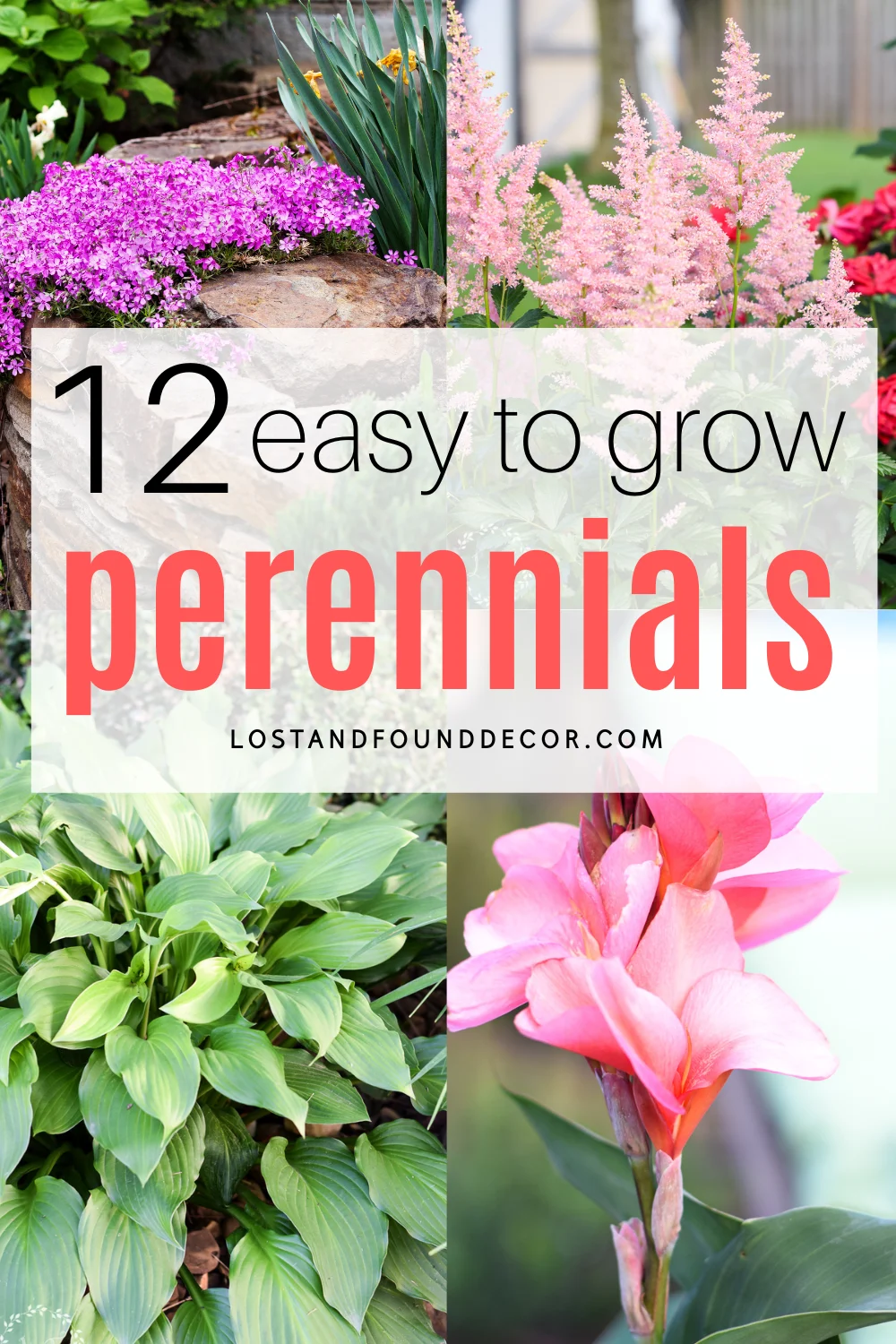
Perennials plants, unlike annuals, return year and year with little to no effort on your part. Plant them once, and enjoy them again and again!
By planting perennials along with your more basic foundation shrubs, you get a cost-effective way to add color and interest to your flower beds.
Starter Tips for the New Gardener
- Identify your planting zone. This will tell you what plants will do best where you live. You can look up your zone by zip code here.
- Pay attention the where your yard gets sun and shade, and how much of each. Some plants want all sun, while others prefer a light shade.
- For the lowest maintenance, choose drought-tolerant plants if you live somewhere with inconsistent rain.
- Let your garden grow over time! Add 1 to 2 new perennials each year as you discover what grows best.
- Be patient with new perennial plants. The first year planted they “sleep”, the second year they “creep,” but the third year they “leap”!
Best Low Maintenance Perrenials for Full Sun
Daylily
Zone: 3 to 9
Blooms: Late spring and throughout summer
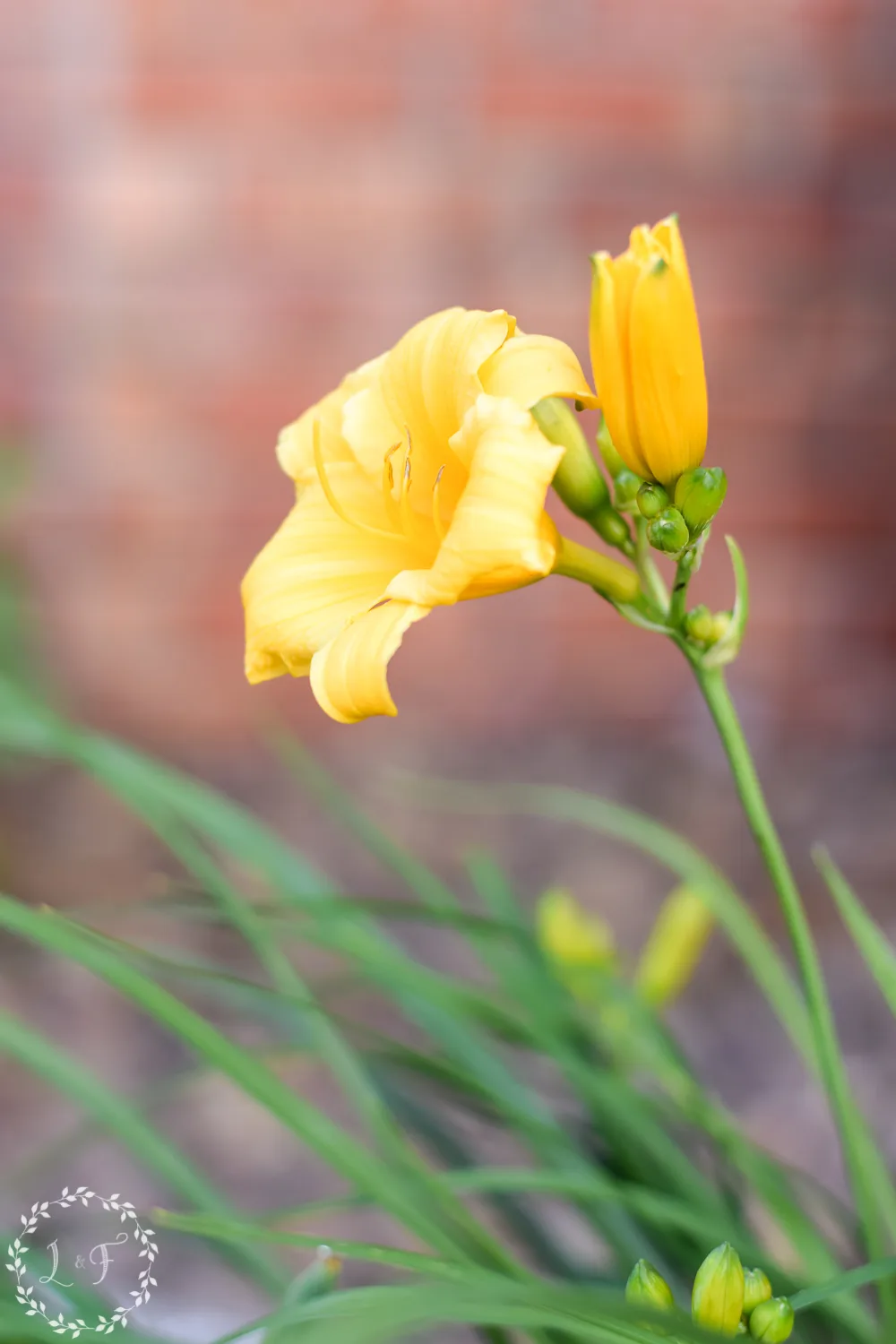
The common daylily is about as low maintenance as it gets. In fact, daylilies grow so well that they are often spotted growing along the sides of the road in rural areas, earning them the name “ditch lily.”
Don’t be fooled by the moniker though, daylilies are beautiful plants that make a great addition to your home garden.
They prefer sun but can grow in light shade, don’t need fertilizing, and will grow in just about any soil.
If you get any sort of regular rain, your daylilies will be happy with that and not need any additional watering.
They also will multiply quickly, so you can divide them towards the end of the growing season and replant them in another area of your yard.
Try planting them in groups or along a border of a flower bed, which is where they are in my yard. I have mostly yellow, but there are varieties where the blooms are orange, red, pink, or red.
Peony
Zone: 3 to 8
Blooms: Mid Spring
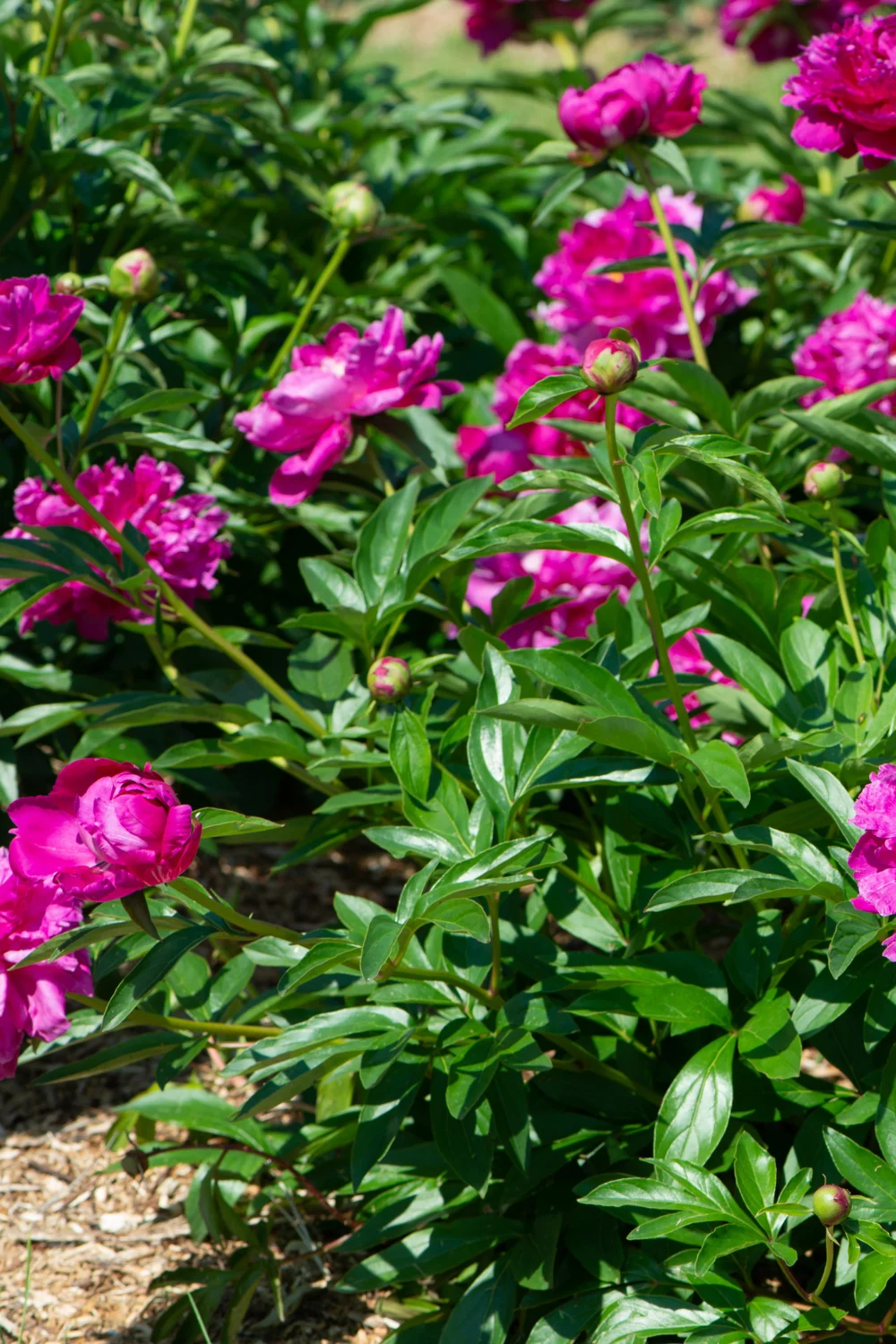
If you’re a flower lover, then a peony should be your top pick. This perennial produces the most beautiful blooms in early spring and is quite fragrant.
They are also one of the best perennials for a cut flower garden.
The overall bloom time for a peony is quite short–about 10 to 14 days– so be prepared to enjoy them while you can.
However the sturdy stems and glossy green leaves continue to grow throughout the summer and into the fall, so they can still provide visual interest for your garden.
Peonies can be planted from a bare root or as an established plant purchased from garden centers (which is the much more expensive option).
To save money, consider purchasing bare-root plants from online plant nurseries. There you can also explore the dozens of different varieties available and pick your favorites.
A newly planted peony can take 2 to 3 years to produce its first bloom, so patience is required.
However once a peony is established, it will come back year after year, growing in size and blooms, with minimal effort.
Veronica (Speedwell)
Zone: 3 to 11
Blooms: Spring to Fall
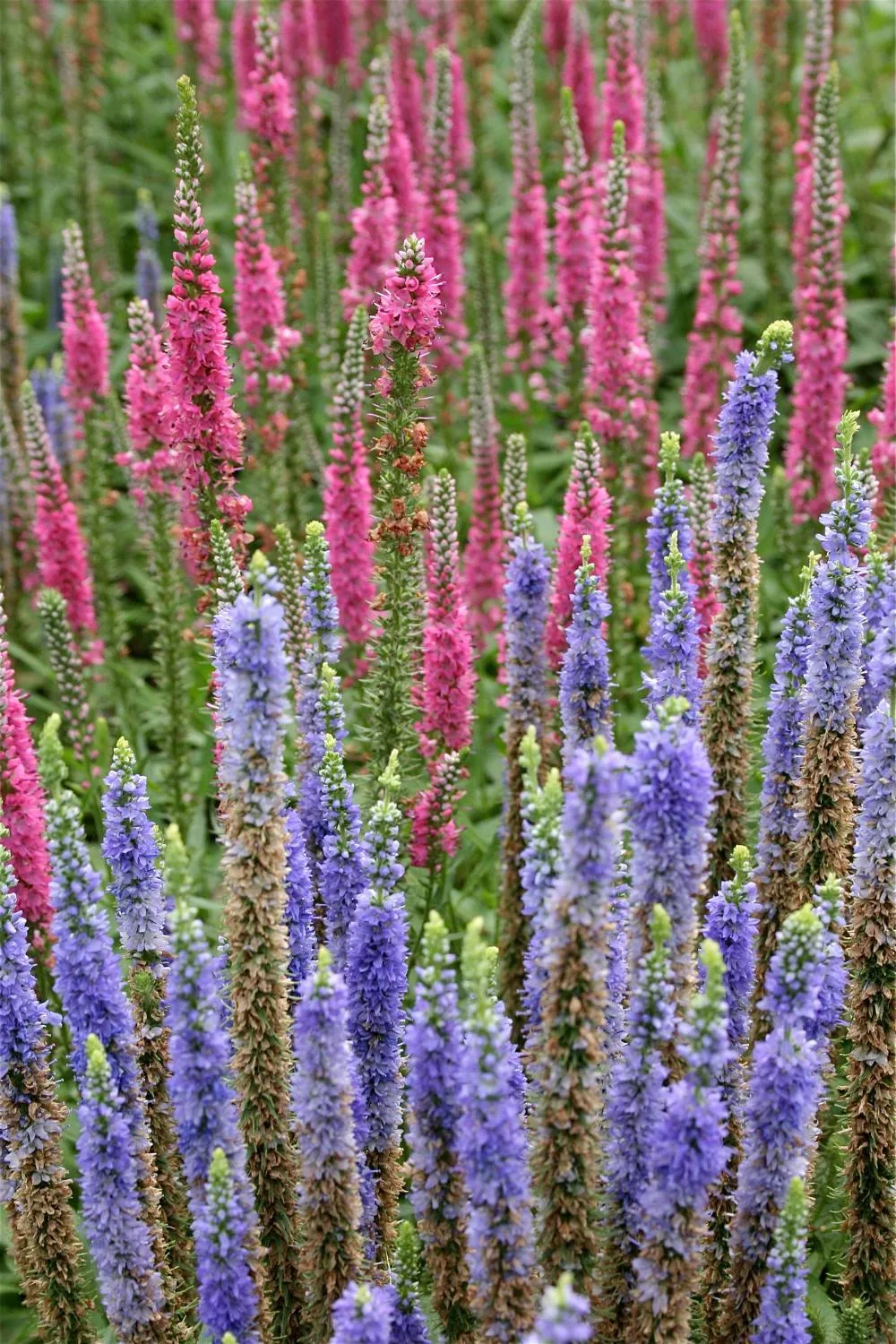
When I first began adding perennials to my garden, my boys were young and obsessed with Star Wars (as most little boys are).
They saw a plant at the garden center that was called a “Lightsaber Plant,” and of course that was the one we had to get!
Turned out that plant was a Veronica, or a Speedwell (how many names can one plant have?), and it was a beautiful addition to our garden!
Veronicas produce spikes of colorful blooms atop green leafy stems. There are several different colors available–pink, white, purple, blue, and red– and each plant will grow 1 to 3 feet tall, depending on your variety.
It’s also deer resistant, so they make a great choice for rural gardens that may receive wandering critters.
Veronica plants prefer full sun but can tolerate partial shade. Ours gets about 4 hours of morning sun and seems happy with that amount.
Gaura (Bee Blossom)
Zone: 5 to 9
Blooms: Late Spring to Fall
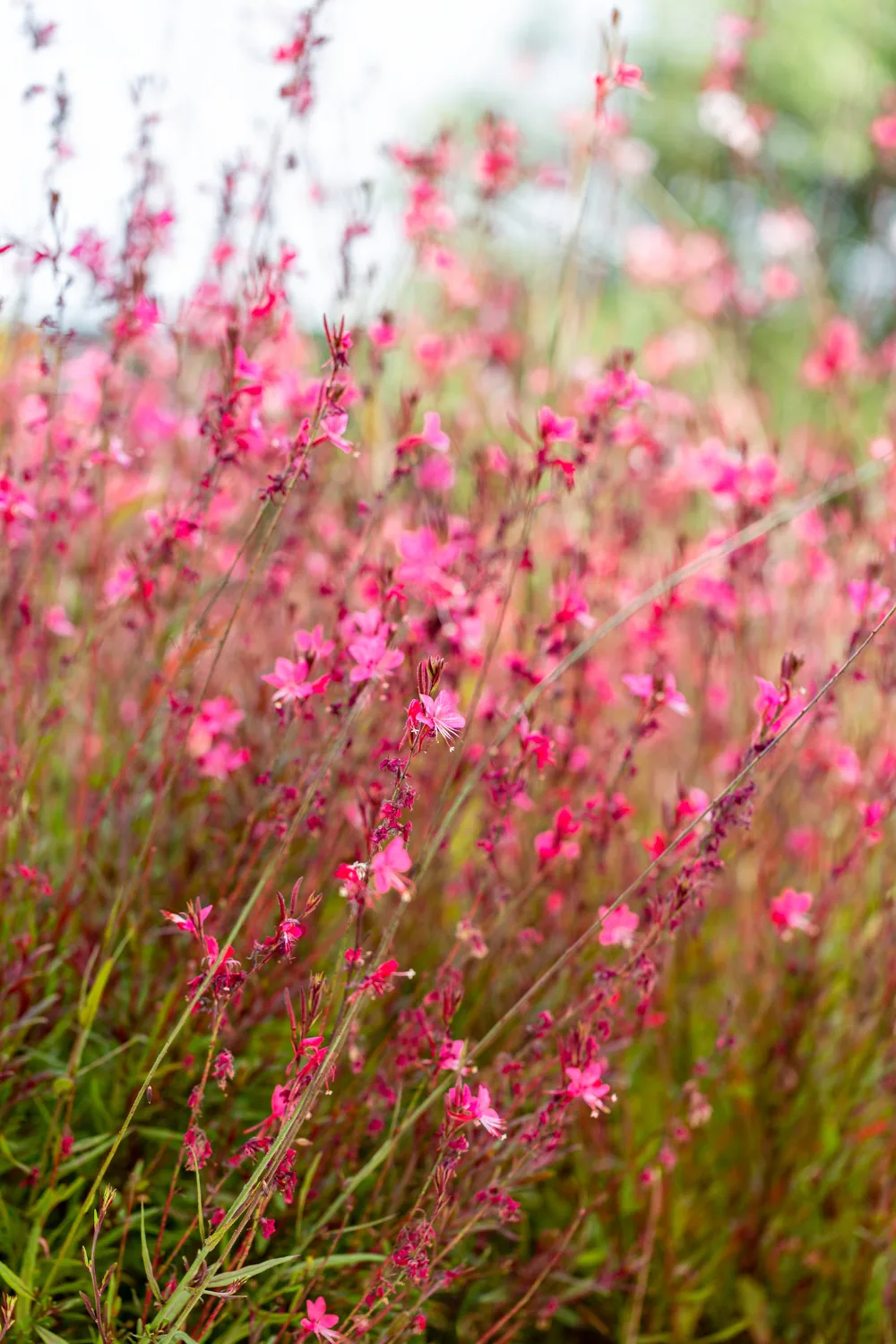
Gaura is a newer addition to our garden. I discovered it when looking for a drought-tolerant plant to add to an empty spot in our side yard.
Because of its deep taproot, gaura needs little watering and thrives in hot, dry weather.
It does not care for wet soil, so if you get too much rain or plant in a spot with bad drainage, it won’t be very happy.
One of my favorite things about gaura is how light and airy it is. The main varieties produce either white or pink flowers, which wave in the wind on their thin stalks.
Catmint
Zone: 3 to 8
Blooms: Late Spring to Fall
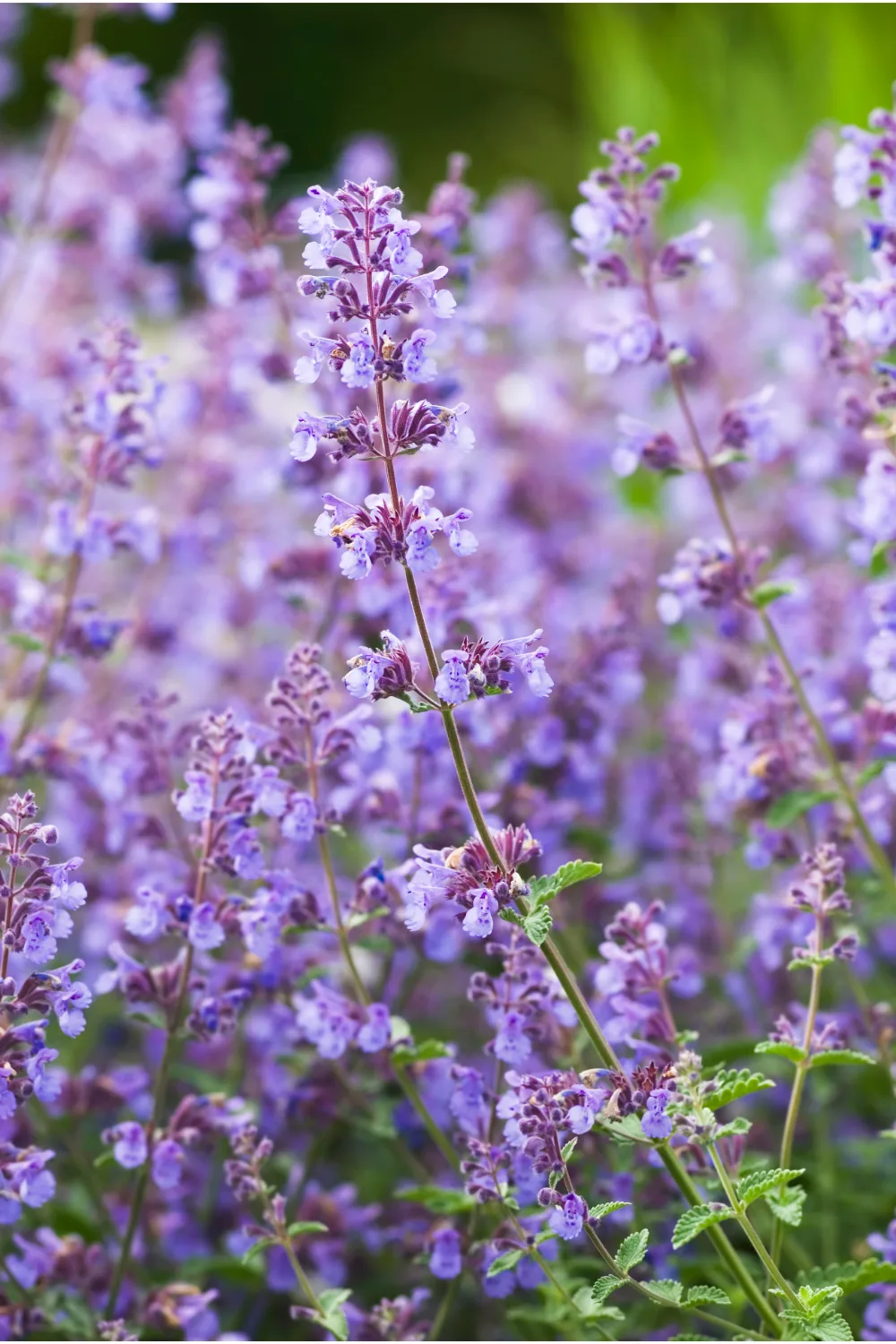
Not to be confused with its relative catnip, catmint is a very hardy, drought-tolerant perennial that will thrive in just about any perennial garden.
It grows relatively short and compact, not getting much taller than 9 inches, but will spread up to about 3 feet over time.
It produces blue-purple flowers and minty leaves, which repel deer and other critters . . . except for your neighborhood cat.
While not as intoxicating as catnip, many cats are attracted to the scent of catmint.
The catmint I planted by my front door was generally flattened by my orange cat who would spend his afternoons laying smack in the middle of it.
It was a small price to pay though for both a happy cat and one of the most low maintenance perennials in our yard!
Creeping Phlox
Zone: 3 to 9
Blooms: Early Spring
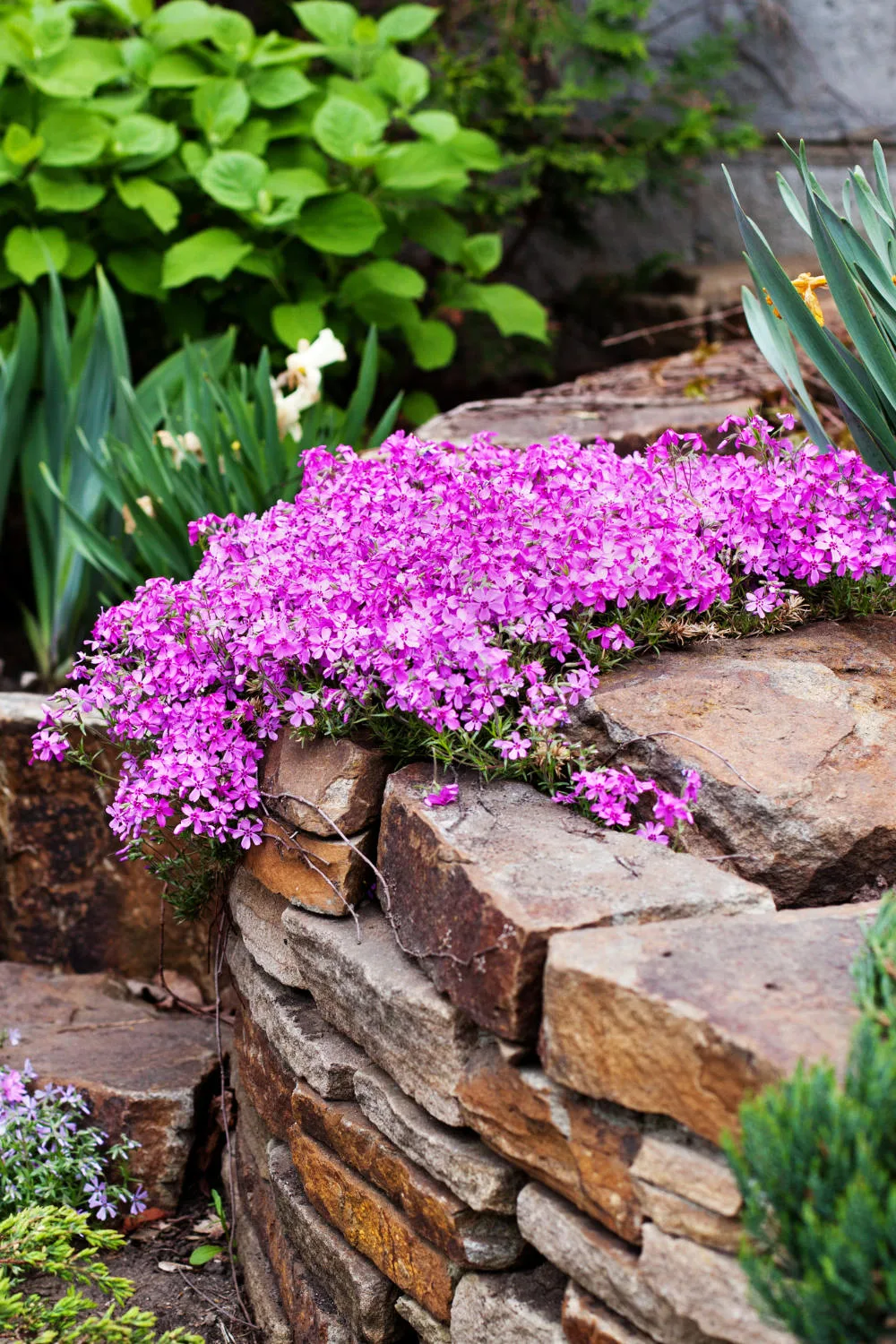
Creeping Phlox is an excellent plant for rock gardens, as it works somewhat like a ground cover.
Growing only about 6″ high at maximum, it creeps along the ground and produces a carpet of blooms in early spring.
After the blooming season, the green foliage continues to grow and will provide a nice green covering for your flower beds.
Creeping phlox blooms are available in a variety of colors, including white, pink, lavender, and even a bluish-purple shade.
Coneflower
Zone: 5 to 8
Blooms: Mid to late summer
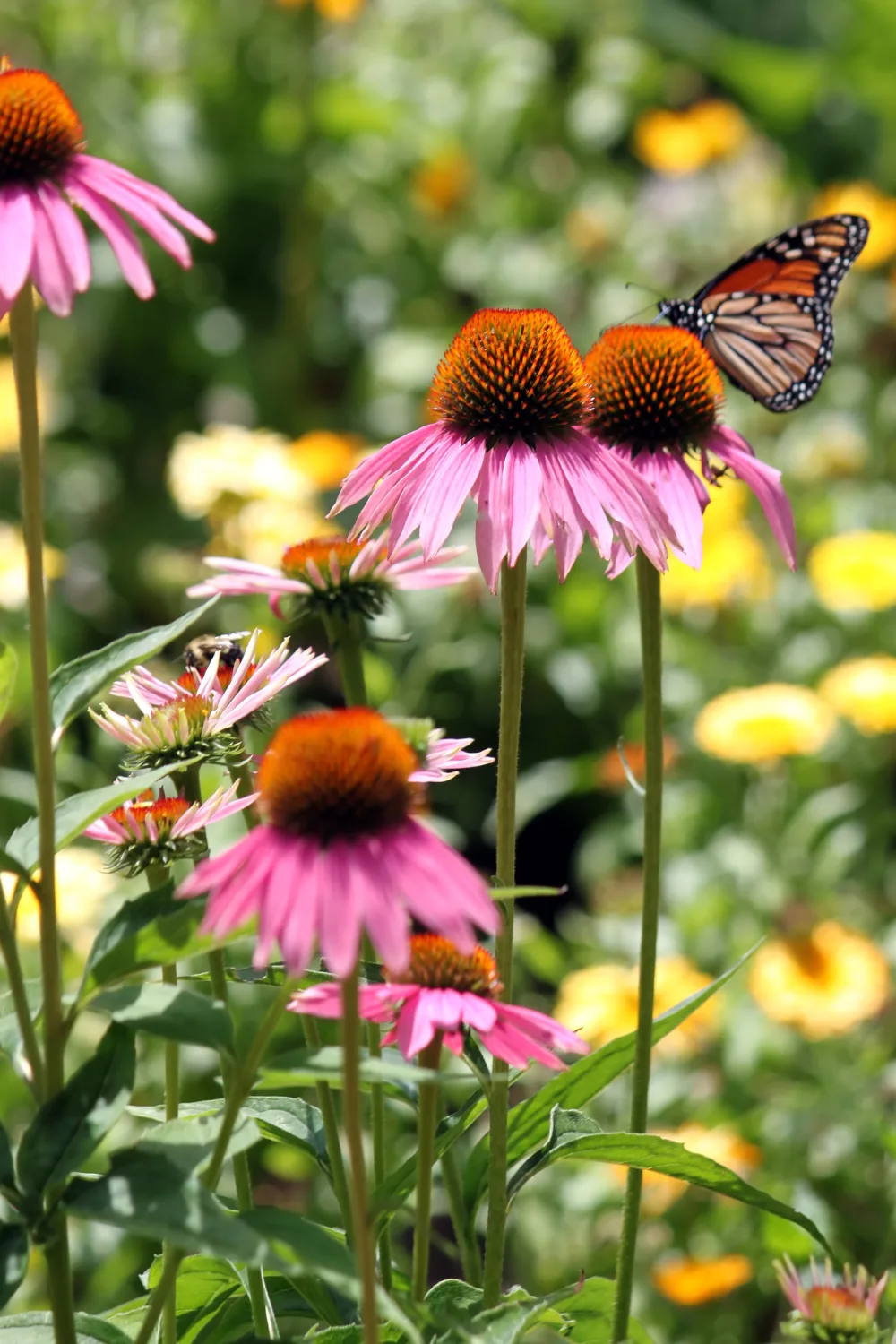
Coneflower, or echinacea, is a must-have on any list of easy-care perennials.
Native to the United States, coneflowers will grow in just about any soil, providing you with striking blooms all summer long.
Birds and butterflies also love coneflower, and many birds will feed off the seed heads of the flowers if left until the fall and winter.
The most popular bloom color is purple, but you can also find them in shades of pink, reddish-orange, yellow, and white.
Coneflowers will die back and regrow each year with little effort. It has been known to spread its seed all by itself in your garden, which can be a good or bad thing depending on your desires.
Try planting a variety of colors in masse to provide a wild array of showy flowers both you and the pollinators will love.
Best Low Maintenance Perennials for Shade
Astilbe
Zone: 4 to 9 (some varieties hardy in zone 3)
Blooms: Mid to Late Summer
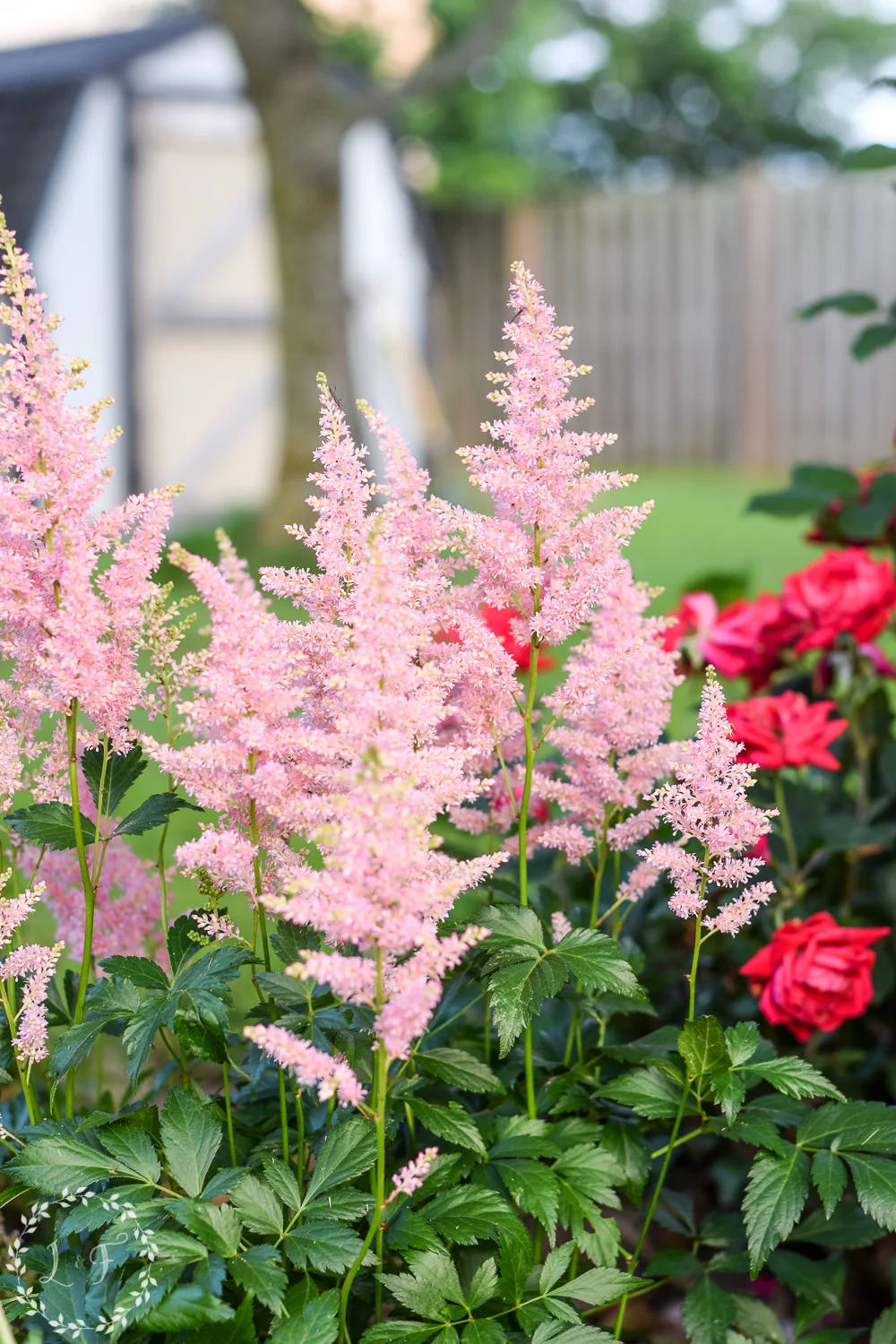
Astilbe is my new obsession in the garden. When looking for a bit of color for shady spots, it’s an excellent option. It will grow in full shade, but does like a bit of morning sun or dappled afternoon light to fully produce.
It produces gorgeous, feather-like spikes of flowers atop dense, green foliage that gradually grows fuller each year.
After about 4 or 5 years, you can divide your astilbe to enjoy it in a new spot.
In warmer climates, it may need a bit of watering if you go too long without rain. Just watch for the leaves to start turning brown–if they do, give it a drink.
Hosta
Zone: 3 to 9
Blooms: Mid to late summer
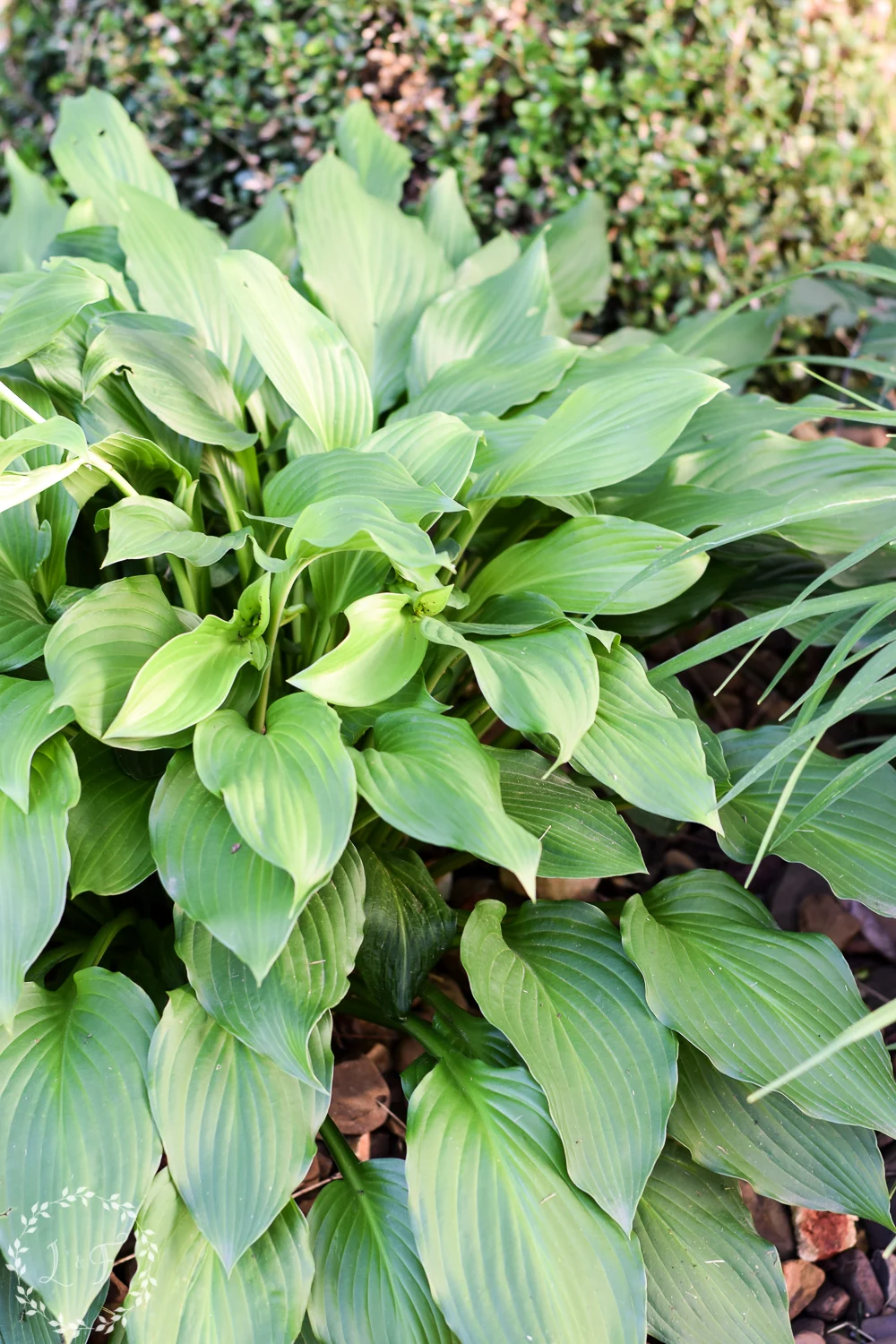
Another shade lover is the hosta, and with over 2,500 varieties, you’re bound to find one you love.
They are hardy plants that need little attention once established, and can live 30 years or longer!
Hostas can tolerate part sun but prefer the shade, especially in the afternoon.
Once the first frost comes, it’s best to trim them back to the ground, as their canopy can harbor slugs and other insects during the cold winter months.
As with astilbe, hostas can easily be divided to propagate more plants. In fact, all 3 of the hostas in my yard came from my sister gave me when she divided one of her giant hostas!
Heuchera
Zone: 4 to 9
Blooms: Late Spring to Middle Summer
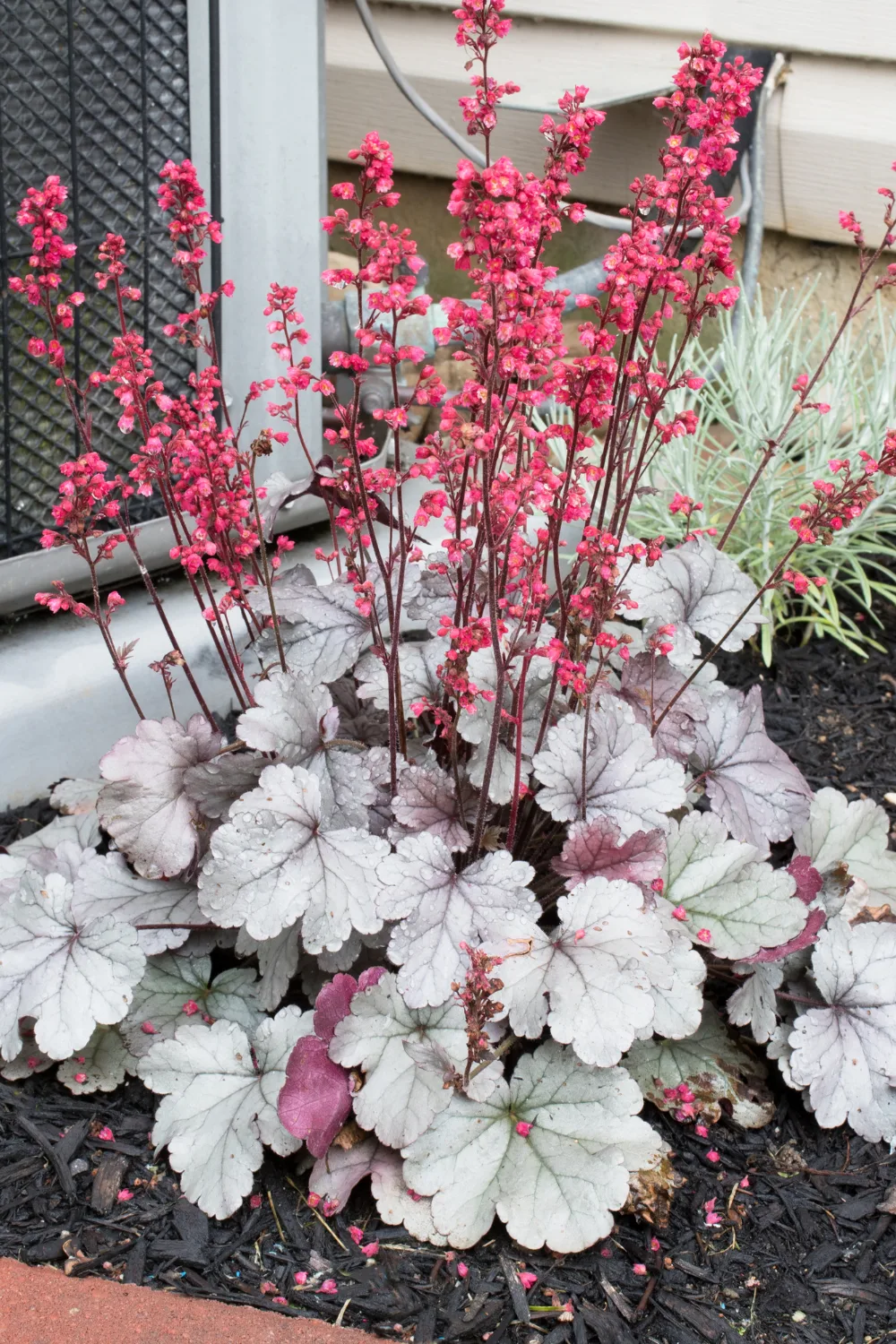
Huechera also goes by the name Coral Bells and comes in a multitude of different varieties.
I am listing it as a shade perennial because it will tolerate shade more so than other plants on the list. But the reality is heuchera can grow just about anywhere.
In North America, it is a native perennial that grows naturally in the woodlands. So if you have similar conditions in your garden, it will be happy.
With the endless varieties of foliage and bloom colors available, heuchera is a great option for when you want easy color in your garden.
It is relatively drought tolerant but may need a bit of watering if planted where it gets hot afternoon sun.
A Few Tropical Options for your Garden
Colocasia (Elephant Ear)
Zone: 9 to 11, zones 3-8 dig up and replant each spring
Blooms: Begins growth early summer
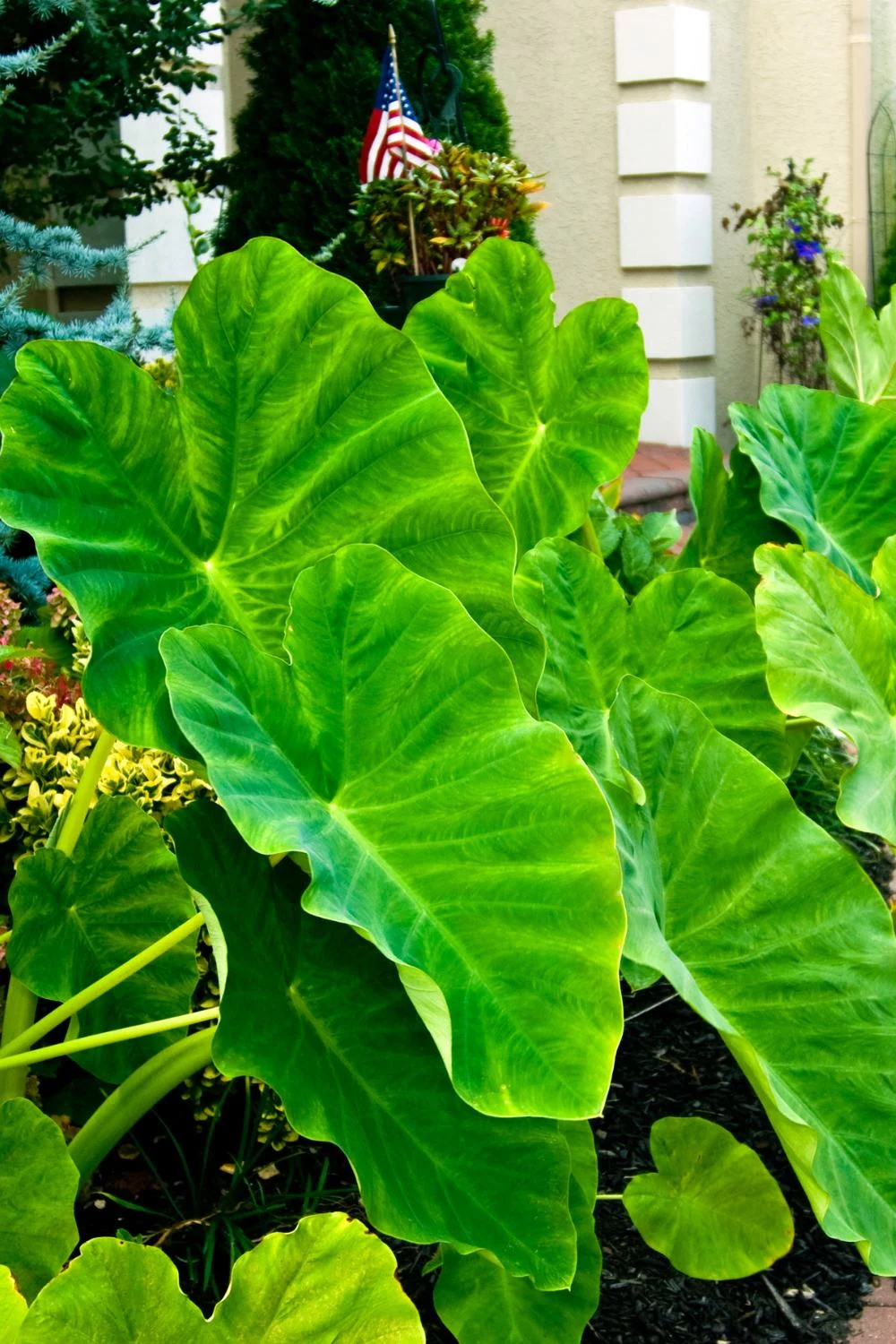
I was delighted to find an elephant ear plant sprouting from one of my flower beds a few months after we moved into your new home. And I was even more delighted to watch it grow into the gigantic tropical plant it becomes, just in one growing season!
These gigantic tropicals are aptly named, as their huge leaves very closely resemble giant elephant ears.
They are fantastic additions to a poolside space or anywhere you want a tropical feel.
Most varieties grow 3 to 5 feet tall (with some giant varieties reaching up to 9 feet), so it’s a good idea to keep their size in mind when choosing a spot for them in your garden.
They can tolerate full sun but prefer a bit of shade in very hot climates without much humidity.
Most of the gardeners will tell you that unless you live in zone 9 through 11, you need to dig up your elephant ear tuber in early fall and then replant in the winter.
I don’t want to argue with the masses, but I will say here in zone 7a, I have one that has returned for 4 years now after being left in the ground for the winter.
So if you’re a lazy gardener (like I am!), leaving it in the ground over winter could be worth a try!
Canna Lilly
Zone: 7 to 10 ??
Bloom Time: Early to Mid Summer
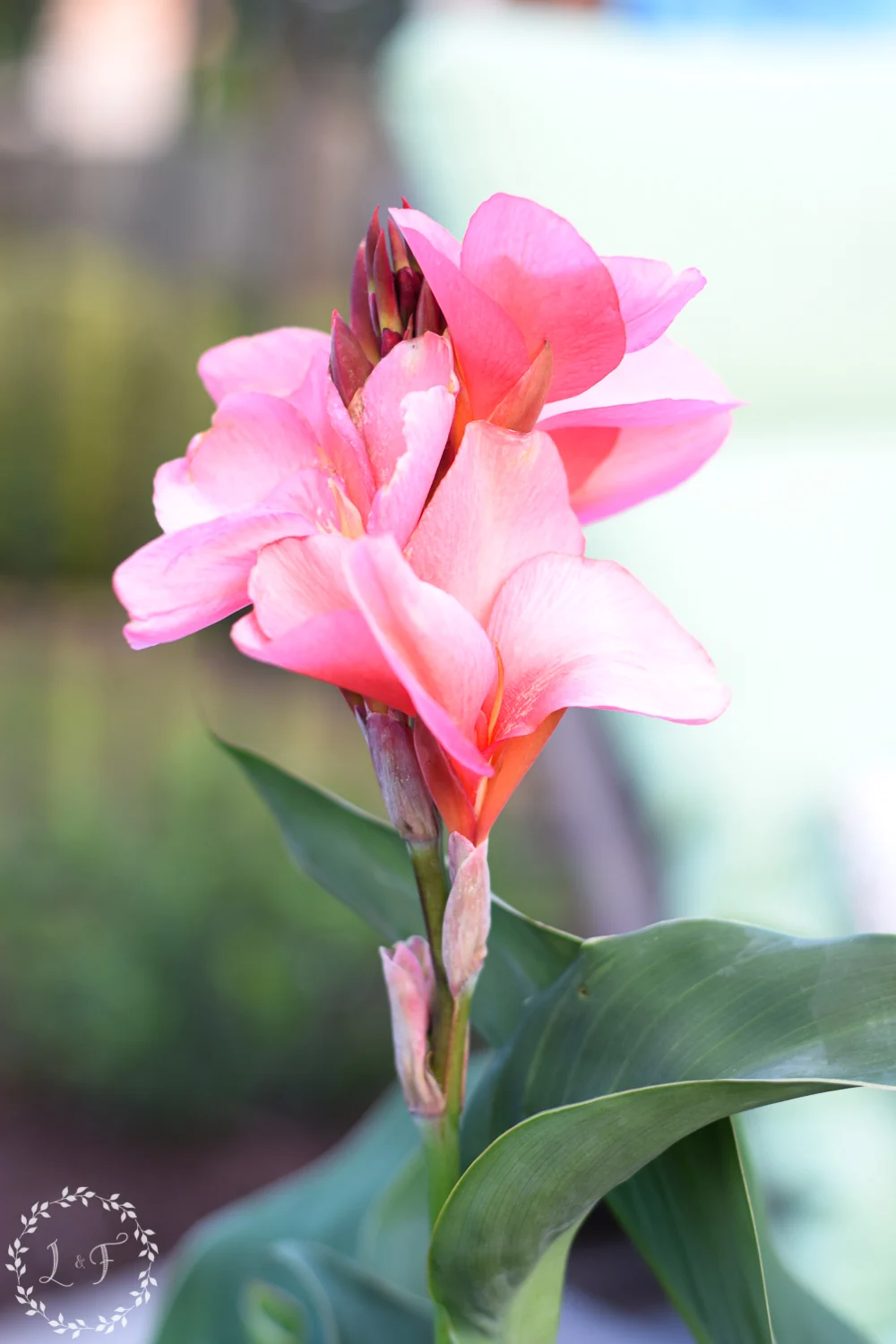
Cannas are striking broad leafed tropicals that produce spikes of red, pink, yellow, or orange flowers. They prefer full sun with moist soil and generally grow 3 to 5 feet tall.
Of all the plants I have shared today, cannas will likely need the most watering during the hot summer months. Too little water will cause their leaves to crack or tear, and their large leaves are part of their beauty!
There is a bit of debate on how hardy cannas are in the winter. Some say they must be dug up and replanted if you live outside Zone 9, others say they survive winters fine as far up as Zone 7.
Living in zone 7a, I see cannas everywhere and can assume most of them have overwintered quite well despite our colder temperatures.
Like the elephant ear, it may be worth the gamble to leave them in the ground if you live in zone 7 or 8. If your zone is colder, dig up the bulbs in the fall and store inside through the winter.
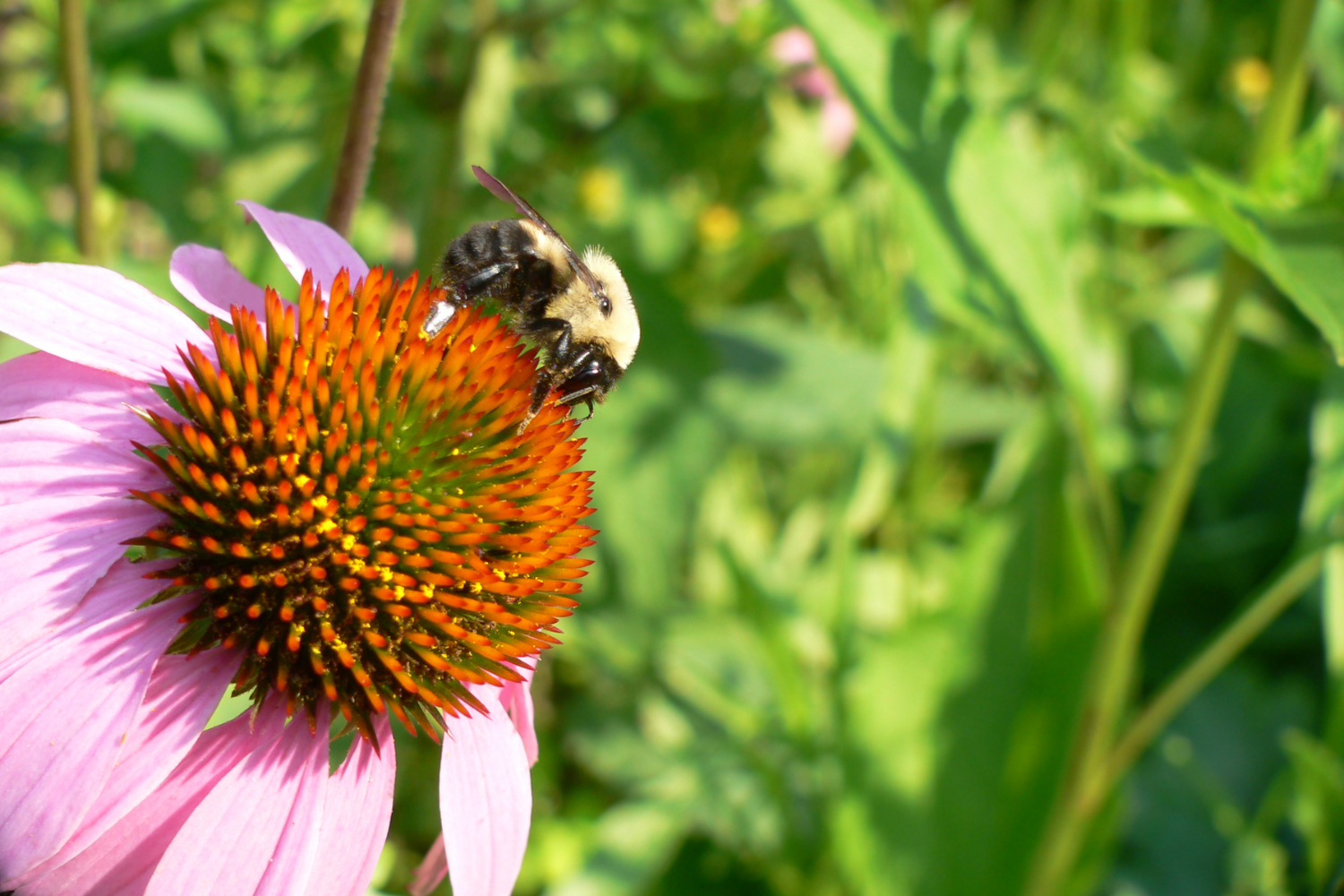
For a beautiful, low-maintenance garden, perennials are the way to go. With this list you have 12 great options to choose from, whether you need plants for full sun, shade, or even a tropical feel.
Thanks for joining me today!
Other posts you may enjoy . . .
6 Step Recipe for Partial-Sun Container Garden Plus Planting Tips
Simple Tip for Bare Spots in Your Lawn




Jen
Monday 5th of June 2023
Thank you for sharing! I'm always looking for low-maintenance plant ideas. I don't have as much time as I would like to spend in my garden, so these suggestions are very helpful. Some I am already growing, but some I'm not.
Looks like I have a weekend project now!
Melanie Alexander
Tuesday 6th of June 2023
I'm with you on the time limitations! I always have big gardening plans, but then the reality of how much time it takes to manage high maintenance plants sets in. I love easy plants that produce great color for you--low maintenance for the win! Thanks for stopping by :)